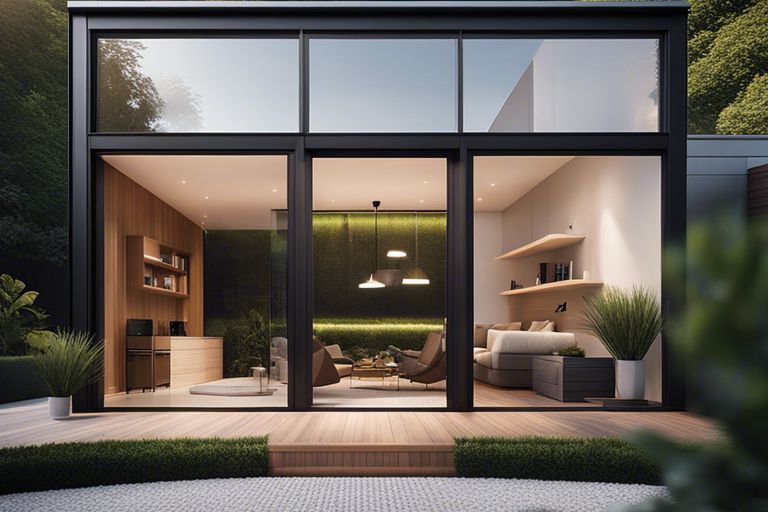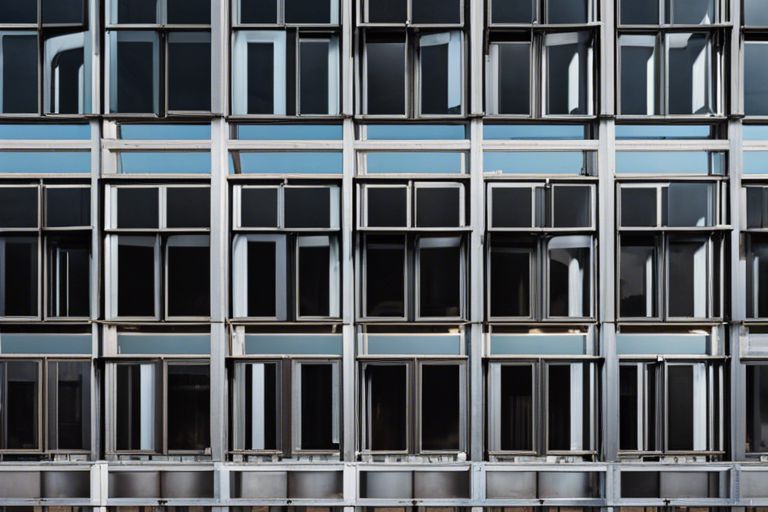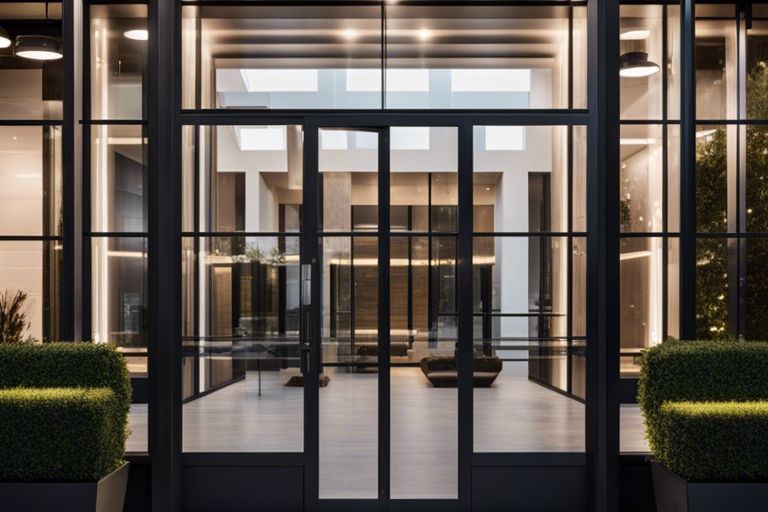Flat rooflights are a crucial element in modern commercial building design, providing numerous benefits that can significantly impact a business. In this blog post, we will research into the importance of flat rooflights for commercial buildings, outlining the positive effects they have on energy efficiency, natural light provision, and overall occupant well-being. Additionally, we will discuss the dangers of inadequate lighting in commercial spaces and how flat rooflights can mitigate these risks. By the end of this article, you will have a clear understanding of why investing in flat rooflights for your commercial building is not just an architectural choice, but a sound business decision.
Key Takeaways:
- Energy Efficiency: Flat rooflights can help improve natural lighting, reducing the need for artificial lighting and cutting down on energy costs.
- Aesthetics and Productivity: Installing rooflights can enhance the aesthetics of a commercial building, creating a pleasant working environment that can boost employee productivity.
- Regulatory Compliance: Investing in high-quality rooflights can ensure compliance with building regulations regarding natural lighting and ventilation in commercial spaces.
Benefits of Flat Rooflights for Commercial Buildings
Natural Lighting and Energy Savings
Flat rooflights in commercial buildings offer natural lighting benefits, allowing more sunlight to enter the space and reduce the need for artificial lighting during daylight hours. This not only creates a more pleasant working environment for employees but also helps businesses save on energy costs in the long run. By harnessing natural light, companies can lower their electricity bills and decrease their carbon footprint, contributing to a more sustainable workplace.
Moreover, the use of flat rooflights can improve energy efficiency within the building by reducing the reliance on heating and cooling systems. The natural light that enters through the rooflights can help heat the space in the winter and reduce the need for artificial lighting and air conditioning in the summer, leading to overall energy savings and a more environmentally friendly operation.
Aesthetic Appeal and Architectural Design
Aside from the practical benefits, flat rooflights also enhance the aesthetic appeal of commercial buildings and contribute to a more modern and stylish architectural design. The sleek and minimalist look of flat rooflights can add a touch of sophistication to the overall appearance of the building, making it stand out in a competitive business environment. Additionally, the natural light that floods in through the rooflights can create a welcoming and uplifting atmosphere for employees and visitors alike.
Businesses can benefit from the promotional value of a well-designed and aesthetically pleasing commercial space that incorporates flat rooflights. The modern and innovative look of these rooflights can improve brand perception and create a positive impression on potential clients and partners, ultimately enhancing the overall image of the company.

Types of Flat Rooflights
When considering flat rooflights for commercial buildings, it is essential to understand the different types available on the market. Each type offers unique features and benefits tailored to specific requirements, ensuring that the right choice is made for the business premises.
| Fixed Flat Rooflights | Opening Flat Rooflights |
| Walk-on Flat Rooflights |
Fixed Flat Rooflights
Fixed flat rooflights are a popular choice for commercial buildings where natural light is desired, but ventilation is not a priority. They are designed to allow maximum light into the space below, creating a bright and airy environment. These rooflights are sealed shut and do not have any opening mechanism, making them ideal for areas that do not require additional airflow.
One of the key benefits of fixed flat rooflights is their low maintenance requirements. As there are no moving parts, the risk of mechanical failure is reduced, resulting in a long-lasting and reliable lighting solution. Additionally, they are a cost-effective option for businesses looking to enhance the aesthetics and functionality of their premises.
Opening Flat Rooflights
Opening flat rooflights offer the same benefits as fixed rooflights in terms of natural light but come with the additional feature of being able to open and provide ventilation to the space below. This type of rooflight is ideal for commercial buildings where airflow and temperature control are important considerations. They can be manually or electronically operated for ease of use.
One important aspect to consider when choosing opening flat rooflights is the potential safety hazards associated with their operation. It is crucial to ensure that proper safety measures are in place to prevent accidents and injuries, especially in high-traffic areas or spaces accessible to employees. Recognising the importance of safety guidelines is paramount when installing these rooflights in commercial buildings.
Walk-on Flat Rooflights are a unique type of rooflight designed to withstand foot traffic, allowing natural light to flow into areas that also serve as walkways or terraces. These rooflights are made from toughened glass or other sturdy materials to ensure durability and safety for individuals walking on them. They are a stylish and practical solution for commercial spaces where light ingress and functionality are equally important.
One of the key aspects to note about walk-on flat rooflights is their versatility in design and application. They can be customised to fit specific requirements, such as size, shape, and load-bearing capacity, making them suitable for a wide range of commercial buildings. Whether used for aesthetic purposes or practical functionality, walk-on rooflights can enhance the overall appeal and usability of a space.
Cost-Benefit Analysis
Initial Investment vs. Long-term Savings
When considering the installation of flat rooflights in commercial buildings, the initial investment may seem daunting. However, it is crucial to look beyond the upfront costs and focus on the long-term savings that these rooflights can bring. Flat rooflights are designed to maximise natural light within the commercial space, reducing the dependency on artificial lighting sources. This results in significant energy savings over time, contributing to lower utility bills and making the initial investment worthwhile in the long run.
Moreover, flat rooflights have a long lifespan and require minimal maintenance, further adding to the cost-effectiveness of this investment. By taking into account the reduced energy costs and the durability of flat rooflights, businesses can make a strategic decision that not only benefits their finances but also enhances the overall working environment for employees.
Impact on Property Value and Marketability
Integrating flat rooflights in commercial buildings can have a substantial impact on property value and marketability. Properties with ample natural light are highly sought after in the market, as they offer a more pleasant and productive working environment. Potential buyers or tenants are willing to pay a premium for spaces that prioritise natural light, making properties with flat rooflights more desirable and profitable.
Furthermore, the installation of flat rooflights can set a commercial building apart from competitors, increasing its marketability and attracting a wider range of potential occupants. Businesses can use this as a selling point to showcase their commitment to sustainability and employee well-being, appealing to environmentally-conscious consumers and tenants looking for modern, energy-efficient spaces.
By enhancing the property value and marketability of commercial buildings, flat rooflights offer a compelling investment opportunity that goes beyond just financial returns.

Installation and Maintenance Considerations
Professional Installation and Safety Standards
When considering the installation of flat rooflights in commercial buildings, it is crucial to prioritise professional installation and adherence to safety standards. Working at heights can be hazardous, so it is important to hire experienced professionals who are well-versed in installing rooflights safely and securely.
Professional installers will ensure that the rooflights are fitted correctly, minimising the risk of leaks or structural issues that could arise from improper installation. They will also comply with safety regulations to protect both the installers and the occupants of the building during and after the installation process.
Long-Term Maintenance and Durability
After installation, long-term maintenance and durability are key considerations for flat rooflights in commercial buildings. Regular maintenance checks can help identify any potential issues early on, allowing for timely repairs and extending the lifespan of the rooflights.
Choosing high-quality materials for the rooflights will contribute to their durability, ensuring they can withstand the elements and maintain their aesthetic appeal over time. Investing in durable rooflights can also reduce long-term maintenance costs for the building.
Regular cleaning and inspections are essential for preventative maintenance, helping to identify and address any issues before they escalate and potentially cause more significant damage. By staying proactive with maintenance, building owners can protect their investment and ensure the longevity of their flat rooflights.
Regulatory Compliance and Standards
When it comes to installing flat rooflights in commercial buildings, it is crucial to adhere to building regulations and standards to ensure compliance with legal requirements and to guarantee the safety and efficiency of the building. Understanding the regulatory landscape is essential to make informed decisions and avoid potential issues in the future.
Building Regulations and Energy Efficiency
Building regulations set out the minimum standards for the design, construction and energy performance of buildings. Installing energy-efficient flat rooflights can help commercial buildings meet these requirements by improving their thermal performance and reducing energy consumption. By choosing rooflights that comply with these regulations, businesses can enhance their environmental credentials and reduce utility costs.
Health and Safety Considerations
Health and Safety Considerations
When it comes to health and safety, installing flat rooflights in commercial buildings requires careful consideration to mitigate potential risks. Proper fall protection measures must be in place during installation and maintenance to ensure the safety of workers and occupants. It is crucial to select rooflights that meet the required safety standards and to regularly inspect and maintain them to prevent accidents.

Flat Rooflights for Commercial Buildings – A Business Case
Flat rooflights offer numerous advantages for commercial buildings, including increased natural light, improved energy efficiency, and a modern aesthetic appeal. This business case highlights the cost-saving benefits of natural lighting, the positive impact on employee well-being and productivity, as well as the potential for a more sustainable and environmentally friendly workspace. By investing in flat rooflights for commercial buildings, businesses can demonstrate a commitment to sustainability, create a more pleasant work environment, and ultimately improve their bottom line. The evidence presented in this business case supports the recommendation that incorporating flat rooflights in commercial buildings is a strategic and beneficial decision for businesses looking to enhance their overall performance and image.
FAQ
Q: What are the benefits of installing flat rooflights in commercial buildings?
A: Installing flat rooflights in commercial buildings can enhance natural light, create a spacious and modern interior, improve energy efficiency, and provide better ventilation options.
Q: Are flat rooflights suitable for all types of commercial buildings?
A: Flat rooflights are versatile and can be customised to suit various commercial building types, including offices, retail spaces, educational institutions, and healthcare facilities.
Q: How do flat rooflights contribute to the overall business case of a commercial building?
A: Flat rooflights can increase the property value, attract tenants or customers, improve employee productivity and well-being, reduce energy costs, and demonstrate a commitment to sustainability and environmental responsibility, thus strengthening the overall business case of a commercial building.






